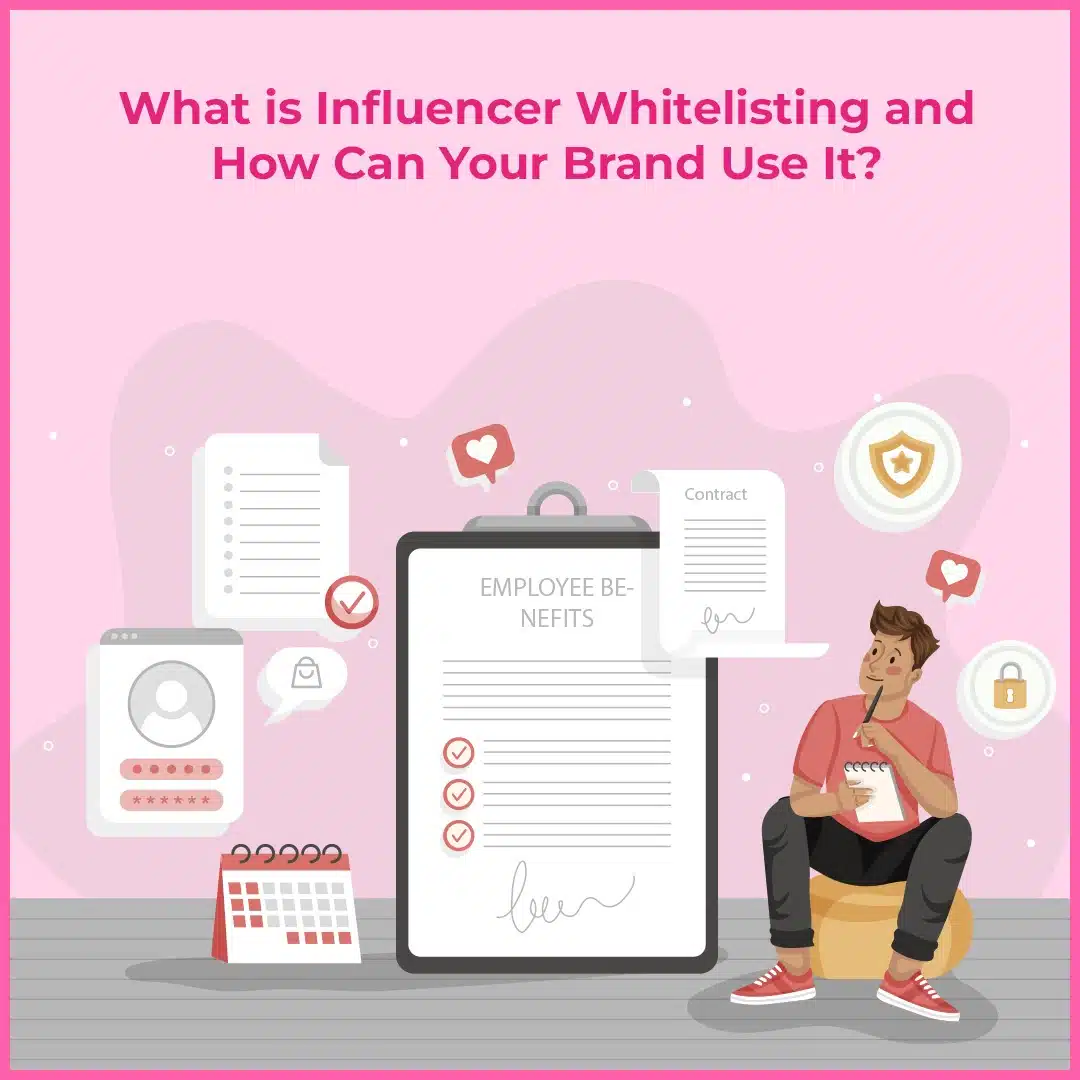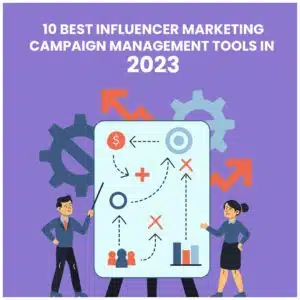Influencer whitelisting is the new junction of the two worlds of organic and paid advertising. Brand collabs, when paid, can collect more data when manufacturers gain support for their customers by organically posting on their social media. In contrast, when it seamlessly identifies top customers through paid advertising, messaging and CTAs, influencers have more creative space to test new products.
What is Influencer Whitelisting?
Simply put, influencer whitelisting is a process that brands use to identify influencers who are best suited to promote their range of products or services. It involves researching influencers, assessing their engagement and reach, and ensuring they fit the brand’s values and objectives well. This helps brands determine which influencers are going to be the right fit for their paid as well as barter campaigns.
Influencer whitelisting is an important part of any successful influencer marketing campaign. It helps brands ensure that the influencers they partner with are the right fit and have the right reach and engagement. It also helps them avoid any potential pitfalls or issues with working with the wrong influencer.
What criteria should be considered by brands while whitelisting influencers?
When it comes to whitelisting influencers, there are certain criteria that brands should consider. Let’s have a look at some of the pointers:
- The influencer should have a large, active, and engaged following.
- Their content should be relevant to the brand’s target audience
- Their messaging should align with the brand’s values and objectives.
- Brands should also assess the influencer’s engagement rates and reach to ensure they are getting maximum exposure for their influencer campaigns.
Along with that, brands should also consider developing a clear set of guidelines. This includes setting expectations for the influencers, such as how often they will post, what type of content they can post, and what type of engagement they should generate. Brands should also consider providing influencers with specific instructions on how to promote their products or services to avoid any confusion later.
How Can Your Brand Use Influencer Whitelisting?
The idea behind influencer whitelisting is to ensure that your brand only works with influencers who have a good reputation, a strong track record of successful campaigns, and the skills and resources. There are numerous ways that your brand can use influencer whitelisting to ensure that your influencer marketing campaigns are successful.
Here are some of the most common ways:
• Brand Collabs: Whitelisting is a great way to establish which influencers are suitable for brand collaborations. It allows you to identify influencers who have the right audience, experience, and platform to represent your brand effectively. All of these can be tracked easily by having a look at the influencers’ Instagram page.
• Barter Campaigns: Influencer whitelisting can also be used to identify influencers who are suitable for barter campaigns. This is a great way to identify influencers who are willing to exchange their services for products or services that your brand offers.
• Influencer Campaigns: Whitelisting is also a great way to identify influencers who are suitable for influencer campaigns. This is a great way to ensure that any influencer campaigns you run are successful and that you are working with the right influencers.
By leveraging influencer whitelisting, your brand can ensure that your influencer marketing campaigns are successful and that you are working with the right influencers. This not only helps to ensure the success of your campaigns, but it also helps to protect your brand’s reputation. Here are some metrics to consider when analysing campaign performance.
How does a brand get started with influencer whitelisting?
To begin influencer whitelisting through platforms like Facebook or Instagram, you’ll first need to set up your own brand account through Facebook Business Manager. The influencer must also have a Facebook Business Manager account that is linked to their Facebook page or their Instagram handle. This is an important pre-requisite for influencer whitelisting.
Once that is set, you’ll have to set aside a budget to pay the influencers so that you can access their account. Usually, this can be about 30% of the collaboration fee that is being charged. By including whitelisting access into your collaboration terms, you’re able to stretch the impact of your influencer marketing efforts, lowering your customer acquisition costs (CAC) while simultaneously boosting your return on ad spend (ROAS).
Next, you need to find the process for requesting access from advertisers. If you plan to run it yourself without the use of any automated tools, then you can use Facebook Business Manager to ask all relevant people to become partners, for smooth functioning. Influencers must provide you with a Business Manager ID or link to their Facebook page or Instagram account. Once they accept, you can use their account for your free ads.
Final Words
In conclusion, influencer whitelisting is an integral part of any successful influencer marketing campaign. It is quite helpful when it comes to brands identifying the right influencers for their campaigns, along with assessing their engagement and reach, and ensuring they are a good fit with the brand’s values and objectives. It also helps brands avoid potential issues with working with the wrong influencers. Check out Sehaye for easier automated influencer selection. Schedule a demo call today to learn more!
Finally, brands should also consider using influencer verification software and setting clear guidelines for influencers. By leveraging influencer whitelisting, your brand can ensure the success of its influencer marketing campaigns.
Happy Whitelisting!




